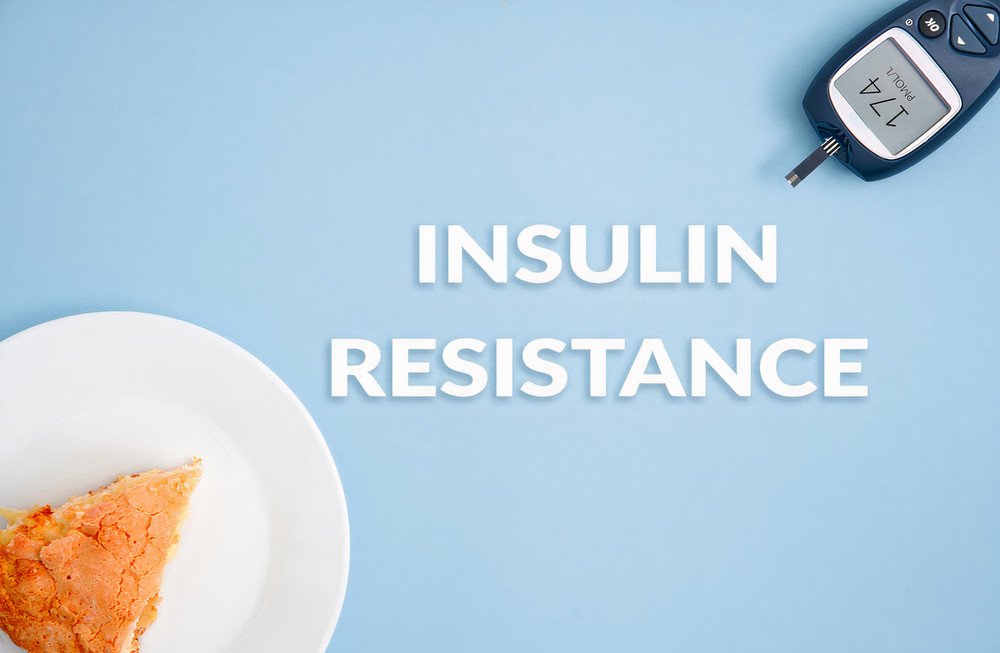2) Insulin Resistance

Insulin is a glucose-regulating hormone produced by the pancreas. Both types of diabetes, the type 1 and type 2, are somehow directly or indirectly related to the functioning of the pancreas. Type 1 diabetes is directly linked to the anatomy of the pancreas. It involves stimulation and hyperactivity of the body’s immune system that kills the pancreatic cells. However, the anatomical structure of the pancreas is not affected in type 2 diabetes and it continues producing and secreting insulin. In this condition, the body cells develop resistance against insulin such that they won’t be able to utilize it despite the normal production and availability.
How the body utilizes insulin is important as it helps to understand why your body develops resistance against insulin. The body is a collection of millions of cells that join together to make tissues and organs. To make and use energy, these cells and tissues need food (nutrients) in a very simple form. When you eat food, much of the nutrients present in it are broken down into a simple sugar called “glucose” in the digestive system. Glucose is absorbed and transported through the blood to these cells and tissues where it is used to produce the energy your body requires for regular metabolic activities.
Insulin is always being secreted in small amounts by the pancreatic cells. The main function of the insulin is to push the glucose present in the blood into the cells. It, along with other hormones, tightly regulates the levels of glucose in the bloodstream. When glucose levels in the blood rise to a certain level, especially after a meal, the pancreas gets stimulated and start releasing more insulin to push the excess glucose into the cells. Cells use this glucose to produce energy that is utilized in performing various metabolic functions of the body. This way, insulin causes glucose levels in the blood to drop.
To prevent hypoglycemia (low blood glucose levels), the body activates the appetite-regulating center in the brain and release hunger-stimulating hormones to eat more food and releases stored glucose from the liver. Lower glucose levels also signal the pancreas to lower the production and secretion of insulin.
People suffering from diabetes either don’t make insulin at all (in case of type 1 diabetes) or their body’s cells develop resistance against insulin (no longer are able to use insulin). This causes high blood sugars in the bloodstream and leads to type 2 diabetes. Whilst scientists are still not able to fully understand the exact cause of insulin resistance, it is a well-known fact that following one or more factors can lead the body cells to create resistance against insulin. These include;
- If you eat a high-calorie diet, high-sugar diet or high-carbohydrate diet
- If you are overweight or obese
- A sedentary lifestyle and lack of physical activity
- Chain smoking and drug abuse
- Taking steroids (high doses) over an extended period of time
- Having polycystic ovary disease or Cushing’s disease
- Having chronic stress
Besides these common risk factors, researchers have recognized that insulin resistance commonly develops in people that have:
- High levels of inflammation
- Excessive fat stored in the liver and pancreas
- High levels of insulin circulating in their blood
As your cells develop insulin resistance, the body stimulates your pancreas to fight back by producing and secreting more insulin. Over a long period of time (months and years), the beta cells in your pancreas responsible for making insulin get worn out gradually and can no longer able to meet the demand for more insulin. Years after the beginning of insulin resistance – your blood sugar levels may begin to rise and lead to the development of type 2 diabetes. It means that diabetes has been started long before the appearance of classic diabetes symptoms such as excessive thirst and increased urination. This signifies the importance of precautionary measures and healthy lifestyle adaptations you should make in your life to prevent insulin resistance – and diabetes. With time, you may also develop NAFLD (non-alcoholic fatty liver disease), a growing metabolic problem that dangerously increases your risk for heart disease and liver damage.
So a question arises here is how much increase in glucose levels can translate into the development of diabetes. By definition, diabetes is a body condition in which your blood glucose level is equal to or greater than 126 mg/dL after fasting for 8-hours. It can also be defined as a glucose level of equal to or greater than 200 mg/dL on a 2-hour glucose tolerance test along with symptoms of diabetes or having a non-fasting glucose level equal to or greater than 200 mg/dL.
